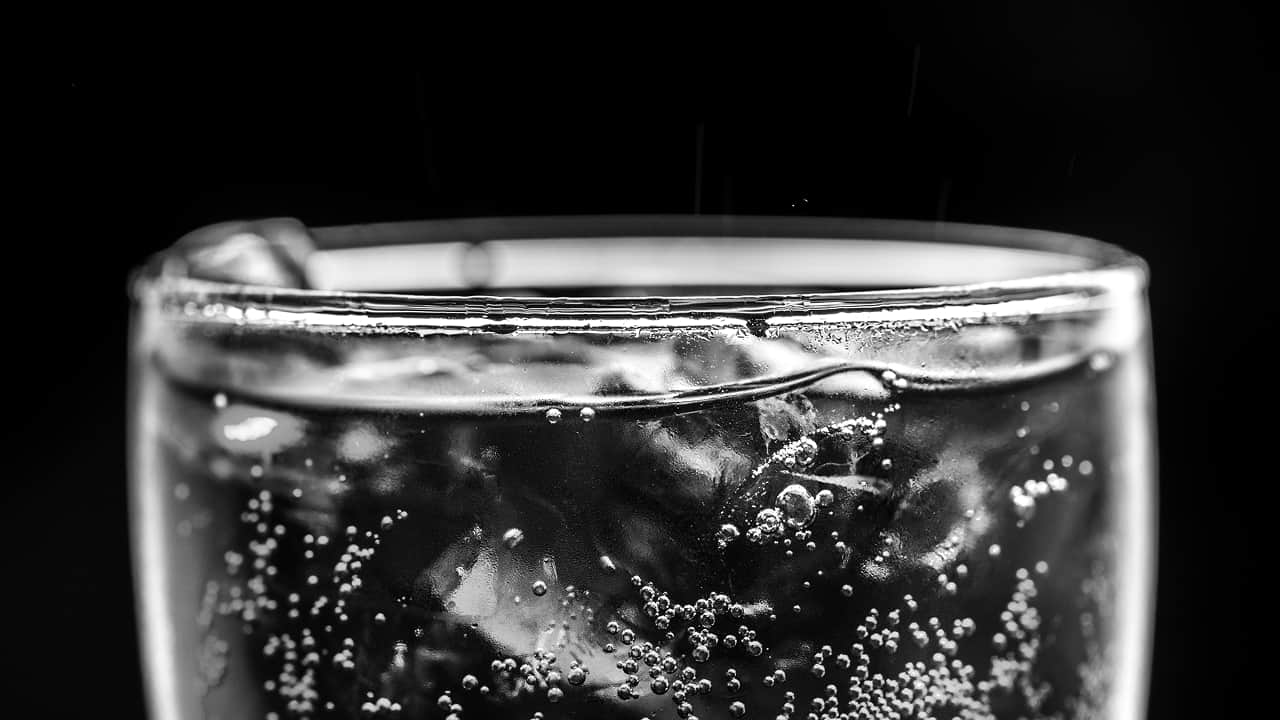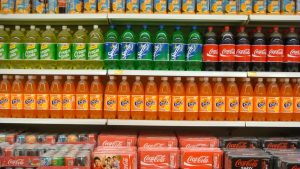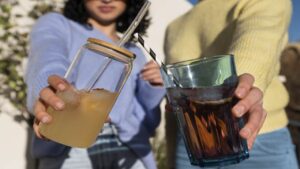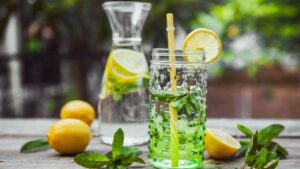As carbonated drinks become more popular, club soda vs. sparkling water is often compared and debated.
Americans love fizzy water. There was a time when fizzy water was Europe’s favorite, which has now become a multibillion-dollar market in the U.S. However, a 35% growth rate is expected in the next few years. The rise is mainly because of the people searching for zero-calorie drinks as a healthier alternative to sugary sodas.
The terminology can be confusing, so we will explain each type of H2O and clarify which one is naturally bubbly or includes carbonation. And also, what are the taste differences between club soda vs. sparkling water?
We are letting you find the key factors, benefits, and best brands of these fizzy sodas! Whether you’re on the hunt for the healthiest soda or just curious about your options, we’ve got your fizzy cravings covered.
The Key Differences
They both may look the same, but they have different qualities. These may include:
Sparkling Water
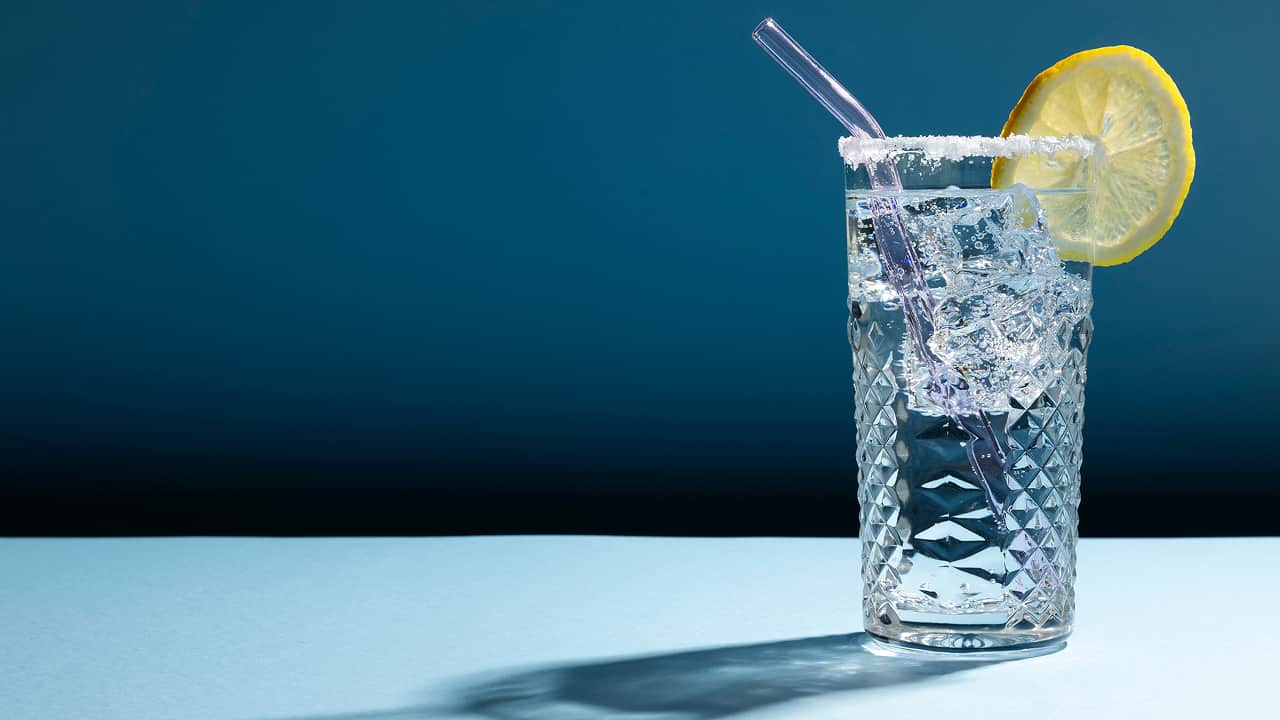
It comes from springs or wells commonly near volcanic activity, where trapped volcanic gases naturally carbonate the water. This is termed as the best type as it may distinguish it from artificially carbonated drinks like seltzer and club soda.
| Flavor | Best Served |
| It depends completely on the mineral content and carbonation levels; sparkling mineral water can taste clean or have hints of saltiness, sweetness, or sometimes even taste like metallic or sulfuric notes. | It is best enjoyed in its own natural and rich flavor. Just like you wouldn’t mix Champagne into a cocktail, you wouldn’t want to dilute the unique taste of premium sparkling mineral water with other ingredients. |
Club Soda
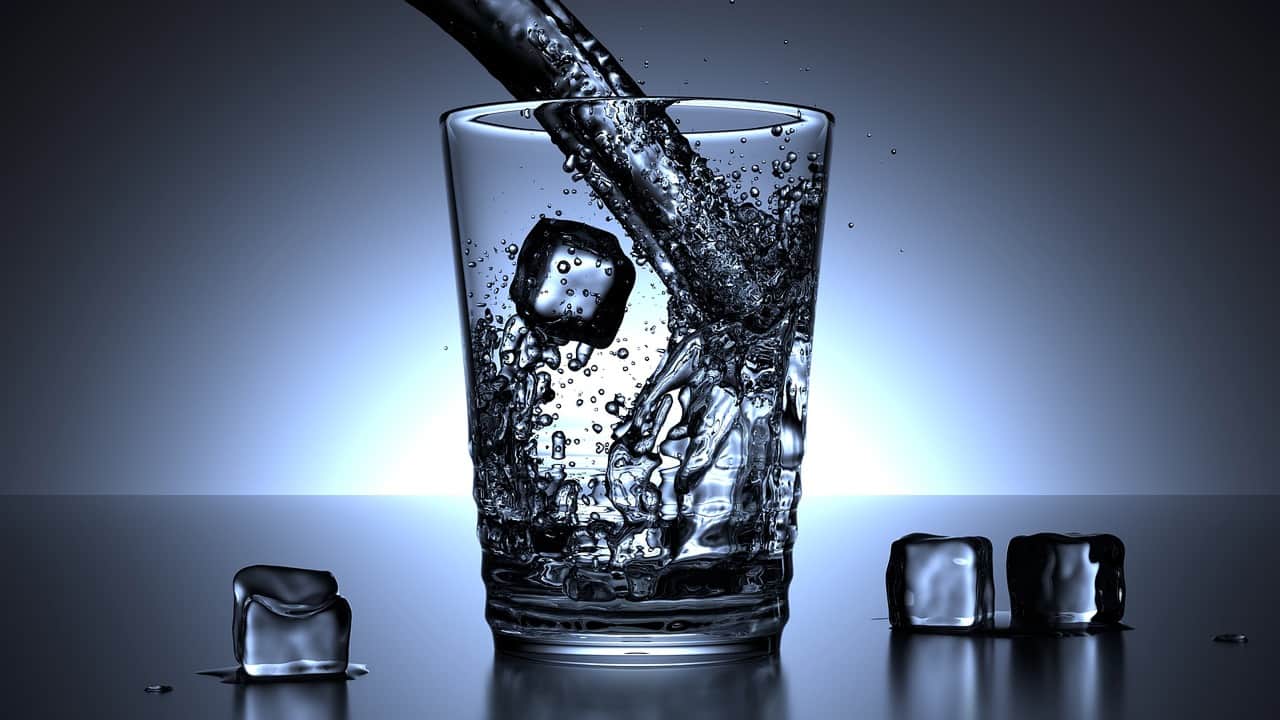
Just like sparkling water, it also contains minerals such as potassium sulfate, sodium chloride, disodium phosphate, and sodium bicarbonate. However, manufacturers add these minerals instead of allowing them to occur naturally.
Related Pick: Prebiotic Soda Is Everywhere?
Also, a single can of it contains sodium for about 95 mg per 12-ounce (4% of the recommended daily intake of 2,300 mg). In comparison, a 12-ounce can of cola has 45 mg (2% DV), while a 20-ounce bottle of Gatorade has 270 mg (11% DV).
| Flavor | Best Served |
| The added minerals gives it a signature salty taste, with bubbles that can vary from small and intense to large and mellow. | It is normally used as a “seasoning” in cocktails. The seasoning helps to enhance flavors and consistency. It is a go-to ingredient in drinks, especially mojitos and spritzers. |
Health Benefits
Two of these carbonated drinks offer hydrating properties, but each one has its unique advantages:
1. Aids Digestion
The best-known thing about Sparkling water is that it helps alleviate indigestion and bloating. Some studies suggest that drinking carbonated water can also help patients with dyspepsia and improve their overall gut function.
2. Keeps you Hydrated
The healthy alternatives to artificial drinks are both club soda and sparkling water. They ensure to keep you hydrated throughout the day.
3. Supports Weight Management
Research has indicated that fizzy water can create a feeling of fullness with the potential to reduce calorie intake and help in managing weight.
4. Mildly Improves Swallowing
Studies show that carbonated water can benefit individuals with swallowing difficulties by stimulating nerves responsible for this function.
Side Effects
While these drinks have their benefits, they may also have some drawbacks:
1. Bloating & Gas
Since both drinks contain carbonation, they can lead to temporary bloating and gas. This effect varies from person to person, but those with sensitive stomachs may experience discomfort.
2. Potential Impact on Dental Health
Over time, your tooth enamel may wear out due to the consumption of carbonated drinks, especially flavored ones. The risk is much lower than with sugary sodas, though an important thing that should be kept in mind. The slight acidity of sparkling water may have some effect on enamel, but according to the University of Chicago Medicine, it is not strong enough to cause serious damage.
Related Pick: 5 Worst Soda for You: Think Before You Drink
The safest way to drink sparkling water for your teeth is with meals, since increased saliva helps neutralize acids. Using a straw can also help by reducing contact with teeth. Additionally, since many countries’ tap water contains fluoride, brushing with fluoride toothpaste is a good way to compensate for its absence in sparkling water.
3. Possible Increase in Appetite
Some studies show that carbonation might trigger ghrelin (the hunger hormone), which later leads to increased appetite and potentially promotes overeating.
Key Factors: Sparkling Water vs. Club Soda
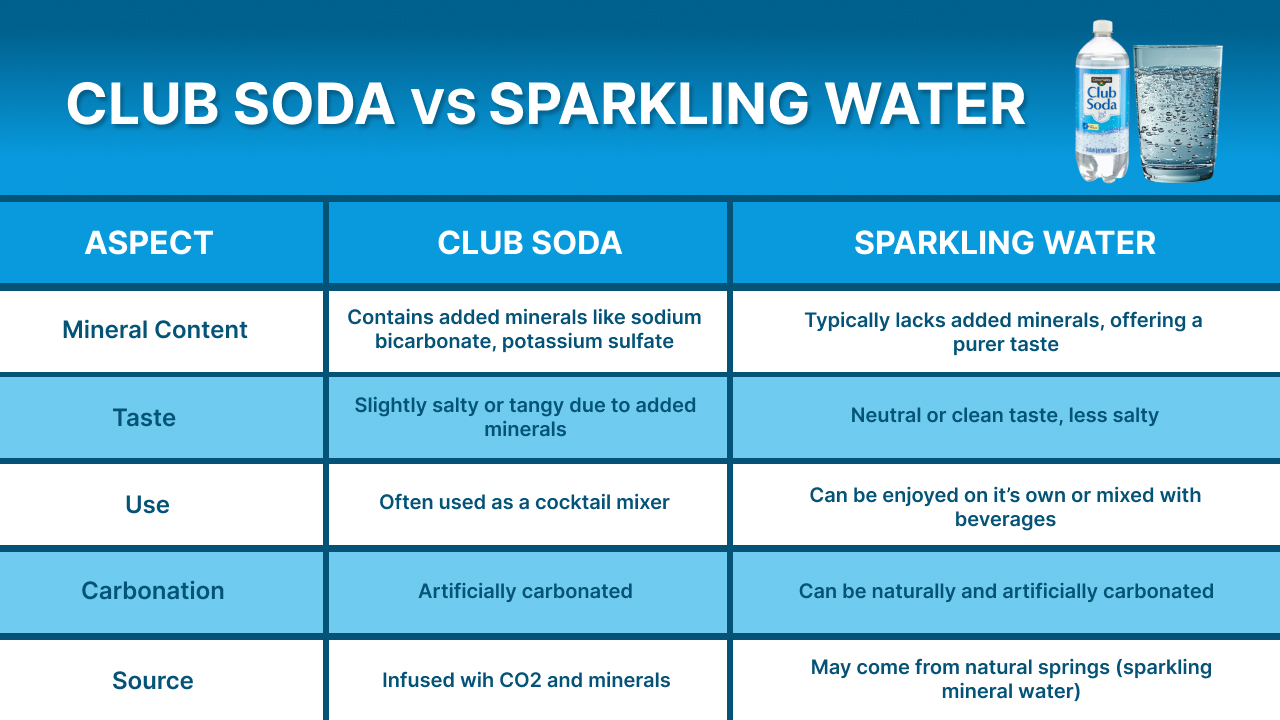
Common Brands
When choosing the right soda brand, there are plenty of options available. Here are some of the known brands for both beverages:
Popular Sparkling Water Brands
The popular brands are:
- Perrier: It is a French brand that is known for its naturally carbonated mineral water. This water tastes strong and crispy.
- San Pellegrino: Then, we have an Italian brand that offers sparkling water, giving you a smoother or light mineral-rich water experience.
- LaCroix: It is a brand that has worldwide recognition. This water has no added sugars or artificial ingredients.
- Spindrift: So, this unique brand combines real fruit extract with sparkling water for a natural taste.
Top Club Soda Brands
The top-listed brands are:
- Schweppes: One of the most recognized brands, Schweppes. It gives you a clean and crisp carbonated experience with the addition of minerals in it.
- Canada Dry: It is famously known for its smooth and slightly salty club soda. Canada Dry soda is often used as a mixer in cocktails.
- Fever-Tree: Another premium mixer brand we have on our list is Fever-Tree. This brand manufactures high-end club sodas with subtle mineral flavors.
- Q Mixers: A high-end brand, Q Mixers specializes in club soda with a minimal composition of sodium and a refined taste profile.
FAQs
The answer is yes, carbonation can lead to bloating and gas, especially for the ones with sensitive digestive systems. For some, drinking a lot of it may induce gas and bloating, causing discomfort to them. However, moderate consumption helps to prevent discomfort. Doctors recommend that patients with acid reflux or gastroesophageal reflux disease(GERD) switch to non-carbonated beverages, including plain water.
Most probably, it does not. There was a small animal study that found consuming only carbonated water brought an increase in ghrelin. There is a need for more studies to be performed. In some studies, carbonated water helped to improve the feeling of fullness. It could benefit people who constantly feel hungry.
It has no negative effect on bone health. The only drinks that cause bone loss are dark colas, which have phosphoric acid that leads to losing calcium in your bones. It has calcium in it, which can improve bone health. And the carbonated mineral waters with magnesium and calcium may have bone-boosting benefits.
Conclusion
Both sparkling water and club soda hold similarities in terms of giving a refreshing and bubbly feel. However, they too have some differences making them distinct from one another. Coming towards sparkling water is an excellent standalone drink due to its natural carbonation and rich mineral content.
Whereas, club soda is best known as a mixer that is used for enhancing the taste of cocktails alongside drinks. Perhaps, with some minor drawbacks of both the drinks. So, it is recommended to have a moderate consumption while enjoying their benefits without any health risks.
Great for hydration and enjoyment, the right choice is all up to you!

